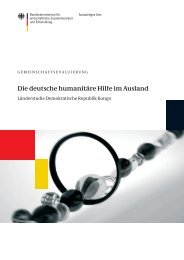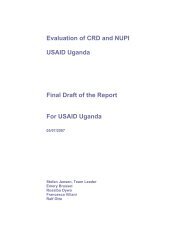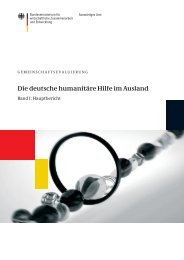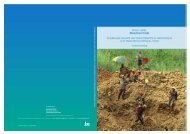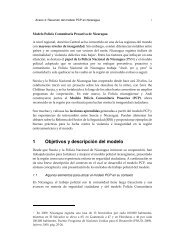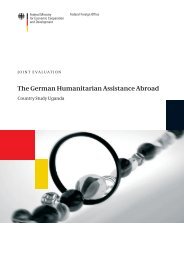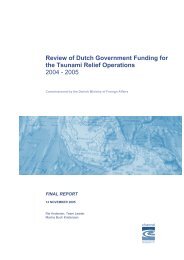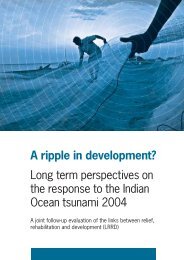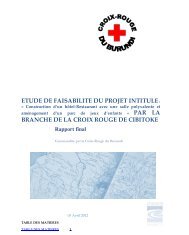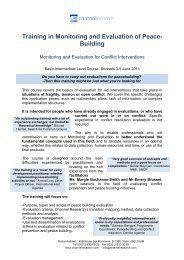Amani Labda - Peace Maybe Joint Evaluation of Conflict - Channel ...
Amani Labda - Peace Maybe Joint Evaluation of Conflict - Channel ...
Amani Labda - Peace Maybe Joint Evaluation of Conflict - Channel ...
Create successful ePaper yourself
Turn your PDF publications into a flip-book with our unique Google optimized e-Paper software.
JOINT EVALUATION OF CONFLICT PREVENTION AND PEACE BUILDING IN DRCVOLUME 1HumanitarianAidandAssistancetoSGBVAdmittedly, interventions designed to reduce the suffering <strong>of</strong> population, linked toconflict, are <strong>of</strong>ten close to the ground and effective, but they are not specificallydesigned for conflict prevention and peacebuilding. The lack <strong>of</strong> attention to theindirect effects on the conflict reduces their positive impact. For example, in orderto better address sexual violence within the context <strong>of</strong> conflict, it would have beenmore effective to work not only with victims but equally to organise awarenesswith those who commit these crimes.In addition, the assistance is implemented by a mediation <strong>of</strong> organisations thatprogressively sub-contract their activities. This cascade <strong>of</strong> contracts is not welljustified, and renders even more difficult a real strategic approach, as it combinesseveral sources <strong>of</strong> financing, and complicates the return <strong>of</strong> information. It does notfavour local partners, who have limited visibility regarding decisions.JusticeIn the DRC, the grave humanitarian and human rights violations has led to apr<strong>of</strong>ound culture <strong>of</strong> impunity, that in turn exacerbates conflicts within localcommunities and increases the lack <strong>of</strong> confidence in the judicial systems.Donors have certainly participated in a more coordinated fashion regarding thereconstruction <strong>of</strong> the judicial sector in the country’s regions <strong>of</strong> the East. Theevaluation, however, highlights the limited involvement <strong>of</strong> the localadministrations in judicial matters and their incapacity to put in place recoverystrategies. The evaluation <strong>of</strong> projects under the theme <strong>of</strong> justice reveal a relativedisinterest in the face <strong>of</strong> gaps regarding land administration and property rights,even though these remain an important conflict driver.DDRandSecuritySectorReformAssistance towards Disarmament, Demobilisation and Reintegration (DDR) andSecurity Sector Reform (SSR) is pertinent yet limited, even if the donors over thecourse <strong>of</strong> the year have overcome their reticence to intervene in a domain too<strong>of</strong>ten considered politically sensitive. The needs <strong>of</strong> this sector exceed theimportant resources it has received to date.Projects are correctly designed to eliminate all links between on the one hand thearmy or rebel groups, and on the other ethnic or economic interests underpinningthe conflict. They are supported by strong implementation mechanisms amongstmany actors (including two EU civilian missions, and UN peacekeeping forces).The high political risks linked to DDR and SSR were well managed.Areas (STAREC), as well as sector-specific strategies such as the Security Sector Reform strategy and theNational Strategy on Combating Sexual and Gender Based Violence (SGBV).



